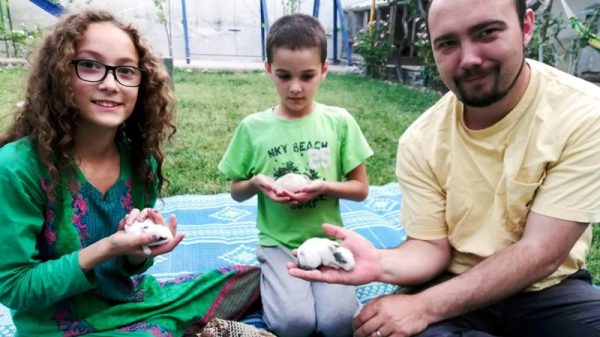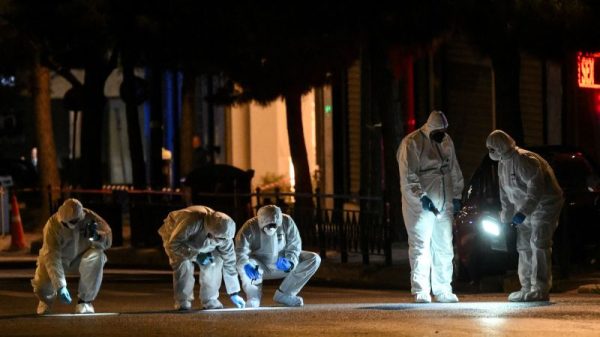The ‘akikiki, a small, gray bird native to Hawaii, may not look remarkable, but its rarity is. Only five are thought to remain in the wild and, according to the state’s Department of Land and Natural Resources, the species could go extinct within months.
The biggest threat to the tiny birds is from malaria-carrying mosquitoes. Living in the cool and lush mountains of the island of Kauaʻi, for many years this honeycreeper species was out of the range of non-native mosquitoes, but rising temperatures from climate change have enabled the biting insects to find their way up to these peaks – with terrible consequences.
“The populations have basically taken a nosedive over the last 15 to 20 years as the climate has changed and mosquitoes are going higher and higher in elevation,” says Hannah Bailey, wildlife care manager of the Hawaii Endangered Forest Bird Conservation Program for the San Diego Zoo Wildlife Alliance. With no resistance to mosquito-borne diseases, the birds are falling victim to avian malaria, which “is almost always fatal to most of the small honeyeater adults,” she explains.
With populations at an all-time low, conservationists like Bailey, along with the Kauaʻi Forest Bird Recovery Project and Department of Land and Natural Resources, are ramping up efforts to save the species from extinction by building up an insurance population in bird conservation centers on Kauaʻi and Maui islands. (The center was not affected by recent wildfires that devastated Maui.)
“Our mission is to provide safe haven populations of the species that are in peril, so that when the environment is right for them to survive long-term, we’ll be able to re-release them,” she says.
Searching for eggs
Recently the team has shifted from looking to capture the handful of remaining birds and bring them to safety, to focusing entirely on collecting unhatched eggs. Each nesting season, the team heads to Kauaʻi’s mountainous plateaus and, knowing where nests have previously been spotted, searches the top of ʻŌhiʻa trees using a camera mounted on a long pole. When they find an occupied nest, they rig up a ladder system, sometimes climbing as high as 48 feet (14 meters) to reach it.
This summer, the team successfully rescued 10 eggs that were placed in a portable incubator and brought safely back to the Kauaʻi Bird Conservation Center. There, collected eggs continue to grow and develop, and any successful hatchlings join the other 50 or so ’akikiki in human care.
The rescued birds will live in enclosures that are carefully designed to mimic their natural habitat while protecting them from mosquitoes, and human interaction is strictly limited so that the birds maintain their natural behavior, says Bailey.
The goal is that as soon as the threat of avian malaria is eradicated, the birds can be released back into their native habitat. “(It’s the) best chance for survival and raising these young chicks hopefully will give us the next generation of ‘akikiki,” she says.
Eradicating mosquitoes
The looming challenge is how to eradicate avian malaria – which not only threatens the ‘akikiki but also other endangered forest birds. Historically, there were more than 50 honeycreeper species in Hawaii, songbirds that feed on nectar and insects, but today there are just 17, as populations have been decimated by mosquito-borne diseases, as well as loss of habitat and threats from other invasive species.
In June, the US government committed nearly $16 million as part of an initiative to prevent the imminent extinction of Hawaiian forest birds. This includes funding focused on expanding captive care programs and efforts to control and eradicate invasive mosquitoes.
Hawaii’s Department of Land and Natural Resources is currently waiting for approval from regulators to implement “incompatible insect technique (IIT)” which involves releasing male mosquitoes that have a strain of naturally occurring bacteria called Wolbachia, which causes non-viable eggs and offspring when they mate with wild females.
The process could help to reduce the likelihood of forest birds being affected by avian malaria, which is only carried by female mosquitoes.
But until this happens, the focus must be on growing the populations and maintaining a stable genetic variety, says Bailey.
“Our biggest hope is that our center is no longer needed, that we have landscape level control of mosquitoes in avian malaria and can control other threats so that these birds can be released back into the wild and live in their native habitat,” she says.







































